When you google New Zealand, what images come up? Stunning landscapes, trails through pristine wilderness, rushing waterfalls, vistas over broad lakes, snow-capped mountains… It’s easy to imagine trekking through this sublime land and many do. There are so many great walks across New Zealand, and nine of them are actually referred to as Great Walks. Stumped as to which walk you should tackle? How about all of them?
In this series about hiking in New Zealand, I’ll talk about how to prepare, how to register if necessary, and what to pack.
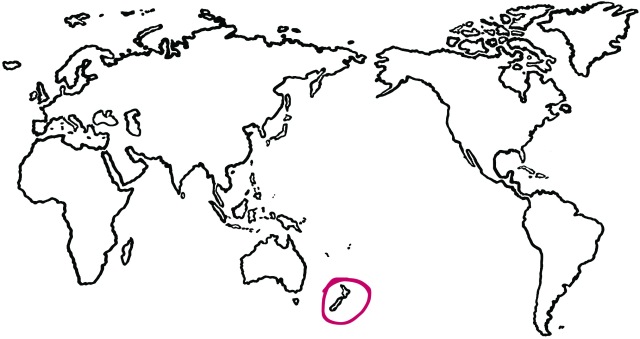
Hiking in New Zealand
Hiking in New Zealand comprises a whole variety of landscapes, terrains, and climates. What you pack for a hike to Cape Brett in January is not what you pack for a hike along the Raikura trail in January, or what you pack for the Tongariro crossing in March. The first step is to determine what hike you want to do – and when you want to do it.
If you’re hiking in Fiordland, be prepared for varied terrain, a lot of mountainous climbing combined with lush alpine valleys. You might even have to ford a river; this is just part of hiking here. Views include the Southern Alps, glacially fed roaring streams, and pine-covered hills. On the flip side, the Tongariro crossing is volcanic, dusty, and dry. There are still uphills, namely the Devils Staircase, but you’ll also cross vast craters and slip slide down the scree. On a good day, you can see across the island to Mount Taranaki. At Abel Tasman National Park, you’ll walk through rainforest, cross tidal streams, and camp on the beach. The trail winds along the coast, with only some varied up and downs.
What’s your hiking style?
Finally, the weather plays a big factor in hiking in New Zealand. In shoulder season, be prepared for parts of the trail to be closed and to have to wait it out at one of the huts. If the weather continues to play up, the DoC might plan to evacuate everyone by helicopter if hiking out is too treacherous. Even in the summer, hikers should always be prepared for bad weather. They say that there are five seasons a day in New Zealand, and depending on where you are hiking, this is accurate. Pack a light rain jacket and wear layered clothing. The sun is strong down here too, even on a cloudy day. You should have plenty of sunscreen to shield you from the strong sun.
Many tracks are self-sufficient tramps. Hikers must be aware of the trail conditions, weather, and some trails are closed to all but the most experienced hikers during certain seasons. You will have to carry your own food, cooking utensils (unless staying in a hut during high season), and plenty of water.
Water is one of the most important things you should take. I know, it’s heavy, but it’s a necessity. Depending on the length of the hike (and the weather), you should have anywhere from 2-5 litres of water per person, per day. According to nutritionists, we’re supposed to drink around 2 litres of water each day – on a normal, non–hiking day. Read this post on reusable travel water bottles for details on the best bottle to take with you.
Still keen to learn about hiking down here? Read on for details on trails in the Northland, Coromandel, and Auckland areas. *I am NOT listing every single hike in NZ – that would take forever! But I’ve hiked a lot of good hikes and I’ll also list the top hikes in the area*
From north to south…
Te Araroa Trail
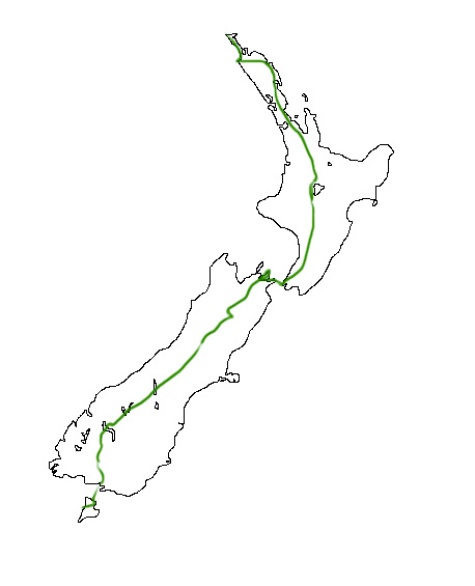 {my really bad sketch of the Te Araroa trail…}
{my really bad sketch of the Te Araroa trail…}
Not really a Great Walk but great nonetheless, this trail goes from Cape Reinga in the north to Bluff in the south. 3000km of incredible trail. It links up with the Tongariro crossing in the North Island and the Queen Charlotte track in the South Island – among others. It takes walkers along Ninety Mile Beach, through alpine forest, along scree covered slopes, and across wintry terrain. All the details can be found here.
Northland trails…
Te Paki Coastal Walk
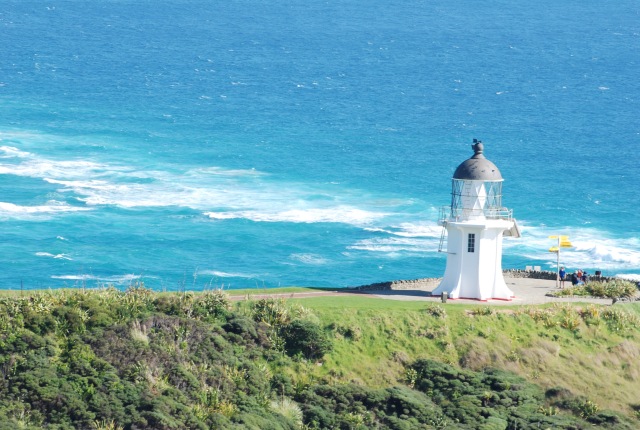
The Te Paki track, which starts at Spirits Bay and ends at Te Paki on the west coast, takes four days to complete. Hikes can choose to hike the entire trek or do short day hikes along the walk. The walk takes hikers along the northern coastline to Tapotupotu Bay, Cape Reinga, Cape Maria van Dieman, and to Te Paki stream. Hikers can choose to continue to hike along Ninety Mile Beach to Ahipara – at the very southern end of the beach.
Trampers on this trail must be self-sufficient. Hikers also must carry tidal charts and inform someone of your plans – there is no mobile reception. For more details, click here.
Cape Brett Track
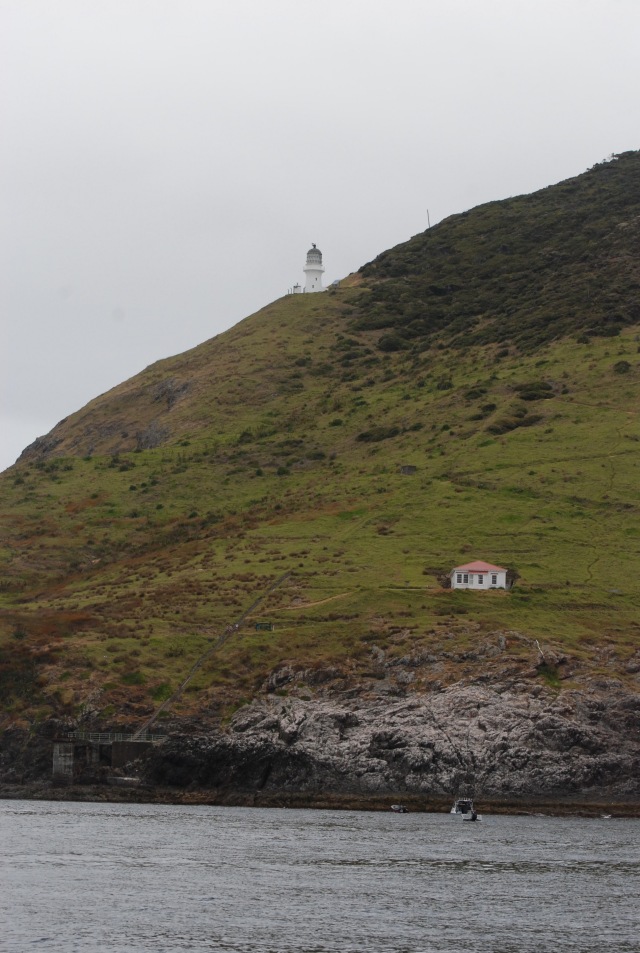
The Cape Brett Track is a Bay of Islands highlight. It traverses 16km of undulating coast from Oke Bay in Rawhiti to the Cape Brett Lighthouse at the end. It is recommended to stay overnight at the Cape Brett Hut ($15/night for adults) unless you have 16+ hours of daylight in which to complete the hike. With extras like a detour to Deep Water Cove for snorkeling and swimming, and the many photo ops along the way, why not stay the night?!
Much of the trail crosses private Maori land. Trail users must pay a $30 fee before starting the hike. Fees are payable at the Paihia i-Site or online.
Auckland area trails…
Auckland Coast to Coast Walkway
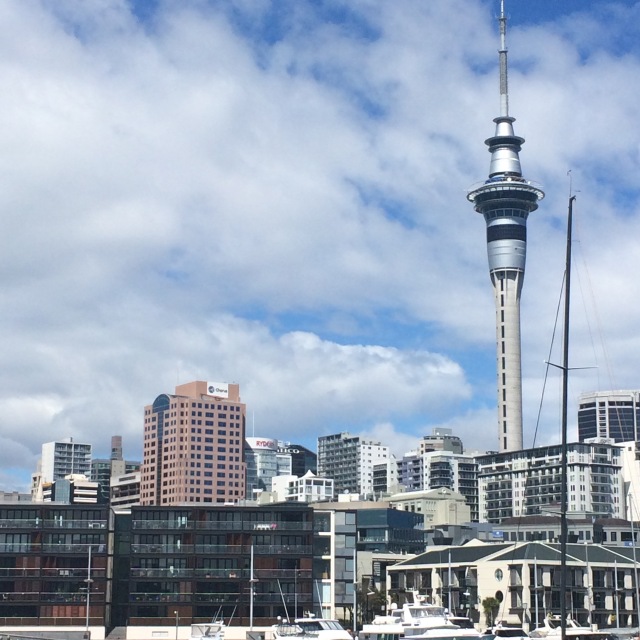
A city walk that stretches from the Pacific Ocean to the Tasman Sea, it traverses over 16km of Auckland. The Coast to Coast walk begins at the Waitemata Harbour and ends at the Manukau Harbour. It takes you past much of Auckland’s colonial and Maori history. Read more details on the coast to coast walk here.
Rangitoto summit walk
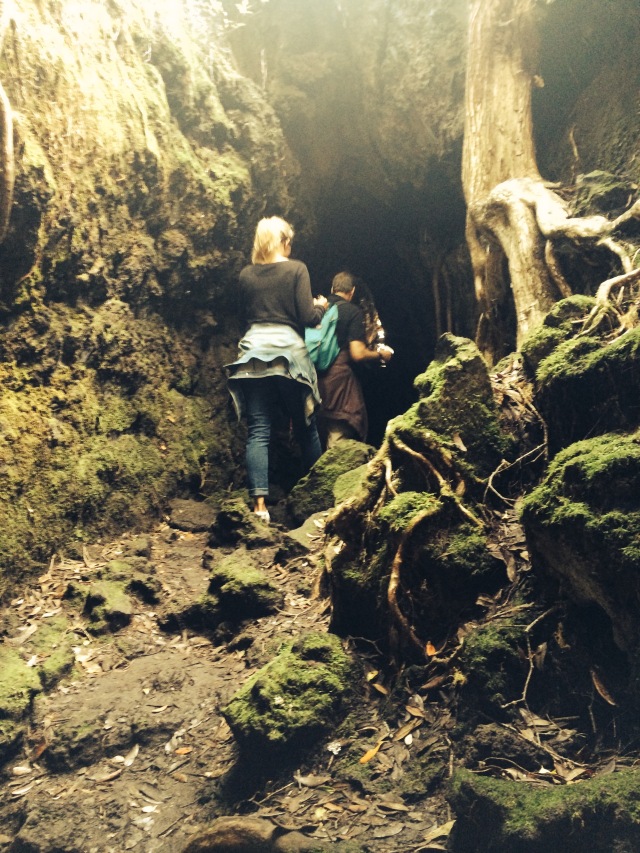
A mere twenty-five minute ferry ride across Auckland’s harbour deposits you on Rangitoto, a dormant volcano with 360 degree views from the summit – of Auckland, Waiheke Island, and more. There are also lava caves and fields, and the world’s largest pohutakawa tree forest, plus some additional trails. The entire hike takes around 2 hours. There are no sleeping facilities or shops on the island so make sure you leave enough time to catch your return ferry.
Coromandel trails…
Cathedral Cove

One of the must-see spots in the Coromandel, Cathedral Cove is only a two-hour return hike from the car park at Hahei. The beach is a beautiful white sandy beach and the cliff faces that tower above the beach are covered in native shrub. It’s an absolute must-do walk.
Coromandel Coastal Walkway
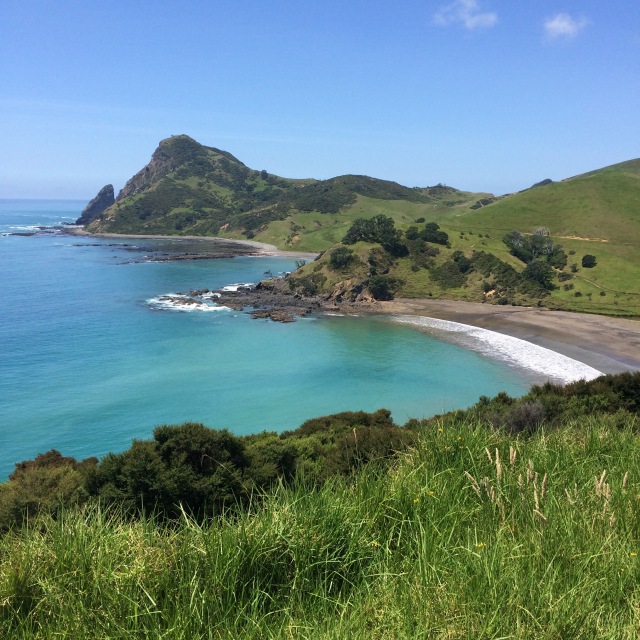
This is a 3-4 hour one-way hike from Fletcher Bay to Stony Bay. The Coromandel Coastal Walkway takes in the utter remoteness of the Far North Coromandel and the simply stunning views of blue sea with lush green hills. *The campgrounds/car parks at each end are two+ hours away by car. If hiking return, it will take you seven hours. Be sure you have enough daylight!
Central North Island trails…
Tongariro Alpine Crossing
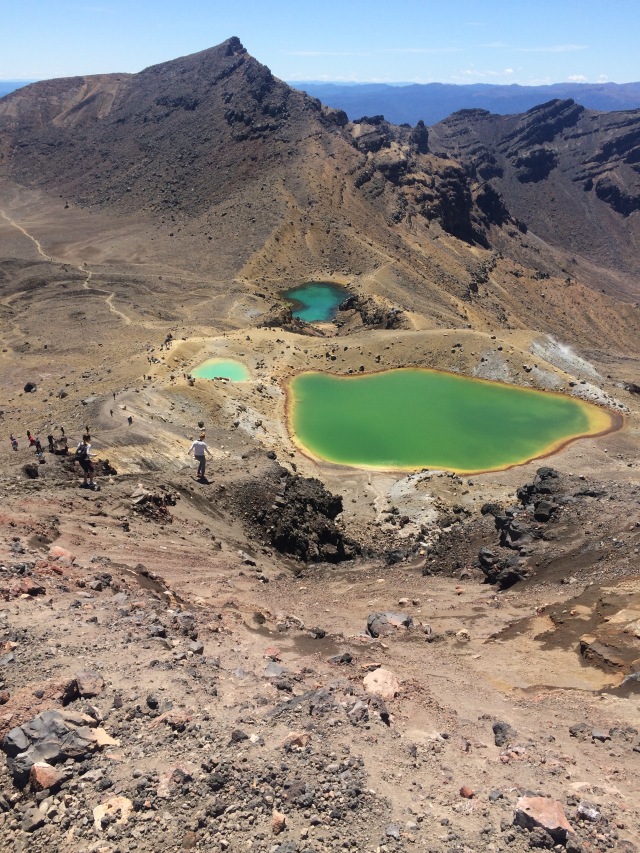
Consistently listed on “world’s best day hikes” lists. The Tongariro Alpine Crossing begins in the dry volcanic Mangatepopo valley and quickly turns into a stairmaster before crossing a flat crater and climbing to the ridge of the Red Crater. Side hikes include the summits of Tongariro and Ngauruhoe (Mt. Doom). The hike takes around 7 hours to complete, plan on at least an hour or two for any side trips (each). For a realistic idea of the hike, read Sally’s post here.
Mount Taranaki Around the Mountain
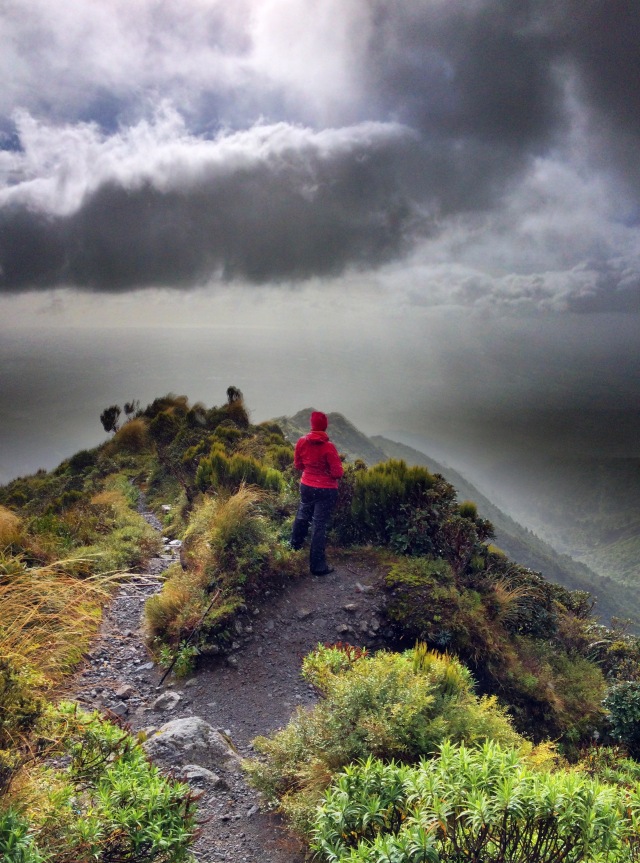
Five hours from Tongariro, Mount Egmont/Taranaki rises majestically above the plains of New Plymouth. There are several hikes on the mountain, from the 8-9 hour summit walk to the five-day around the mountain hike. Some trails are closed in the winter and summitting Taranaki in the winter is not recommended unless you are an experienced alpine hiker.
Read more about hiking in New Zealand here!
What are your favourite hikes in NZ? List them in the comments below and you’ll make my last post in this series: “favourite hikes in New Zealand.”
Like this post? Pin it!
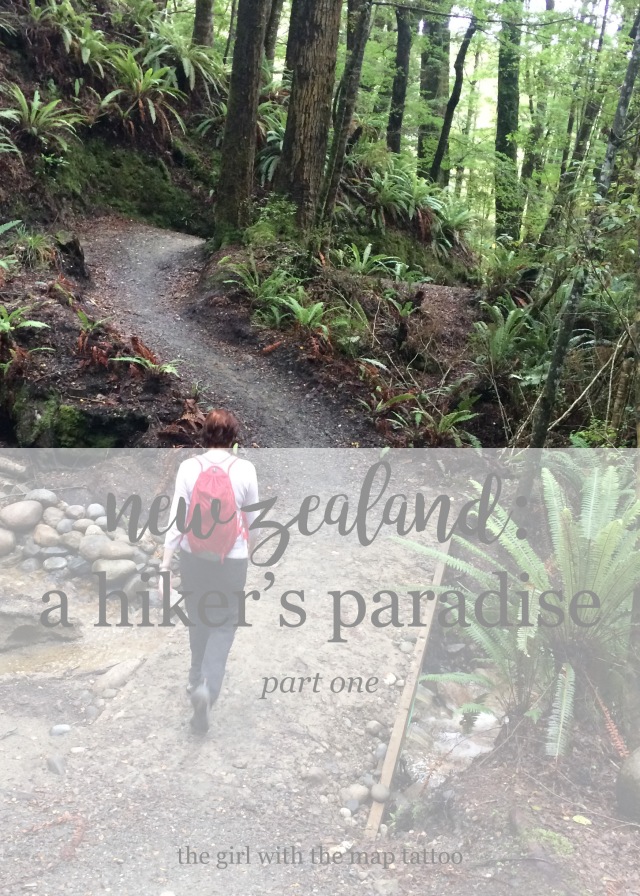

5 thoughts on “new zealand: a hiker’s paradise, part one”
Comments are closed.